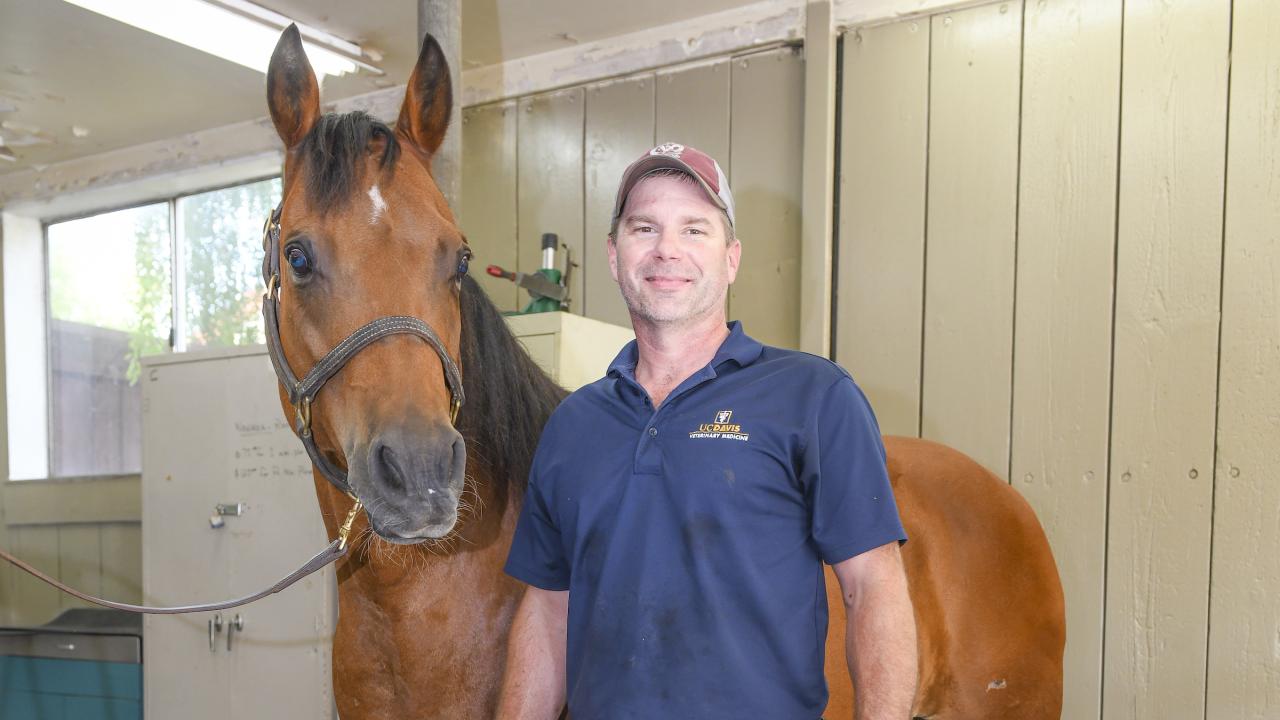
10 Things You Might Not Know About Horse Hooves
We have all heard the saying “No hoof, no horse.” Hoof care is a vital part of ensuring horse health, but the best ways to keep hooves healthy are often hotly debated. We worked with UC Davis veterinary hospital farrier Shane Westman, APF-I, to share ten things you might not know about horse hooves.
- It’s never just a trim. The trim is where it all begins. Your farrier is assessing your horse’s conformation (hoof/pastern axis, heel angle/length, digital axis, palmar/plantar angle, centre of rotation, dorso-palmar/plantar balance, hairline) and trimming to keep everything in proper alignment.
- Horses in hard work aren’t the only ones that need shoes. A shoe is anything that covers the foot for protection (boots are shoes). Shoes can be used for a variety of purposes, including protection, traction, support, and therapeutic applications. A farrier can use shoes to manipulate the forces acting on a hoof, positively or negatively. Shoes can move the weight load around, and leverage can be reduced or added to ease stress on tissue or to change movement.
- Wild horses have many of the same hoof problems as domestic horses. Research on feral horse hooves identified abnormalities similar to those seen in domestic horses, including long toes, medial/lateral imbalances, dorsal and quarter flare, laminar rings, cartilage changes, frog abnormalities, and contracted and underrun heels. In one study, more than 75 percent of specimens from the Equus fossil record (~1-3 million years old — i.e. well before domestication) exhibited pathology consistent with chronic laminitis.
- White hooves are not softer and do not have more problems than black hooves. A comparative study of horseshoe fixation versus hoof colour concluded that colour did not appear to have a strong effect on the resistance to nail extraction, and hence shoe fixation. Other studies found that hoof pigmentation had no detectable effect on hoof wall stiffness/elasticity, moisture content, or hoof hardness.
- Hooves may grow slower in the winter, but not because of the weather. Hoof growth is dependent on many factors including genetics, nutrition, environment, regular professional hoof care, proper weight management, and regular movement/exercise that can be impacted by seasonal changes (for example, colder weather and shorter days may mean less exercise).
- An eight-week trimming/shoeing cycle may not be ideal. Hoof care cycles depend on a number of factors. There is no one set rule that works for all horses and all situations. Studies show that visiting the farrier every five to six weeks is an optimal schedule to maintain proper balance, especially for horses in work. However, it is important to talk with your farrier to come up with the best schedule for your horse.
- Horses do not get thrush from standing on wet ground. Thrush is a fungal (Fusobacterium necrophorum) infection of the frog, and may spread to the white line, sole, and sensitive layers of the hoof. The hoof is under constant assault from anaerobic bacteria and fungi, but balanced, healthy hooves have a natural cleaning mechanism. The presence of urine and feces seems to be a causative factor for thrush. Hot shoeing can kill bacteria and fungi between the shoe and the hoof, and regular cleaning and topical treatments can help keep bacterial and fungal invaders at bay. The best way to avoid thrush is to clean your horse’s feet regularly.
- Hot fitting a shoe does not hurt the horse. The hoof is an amazing insulator and can sustain extremes of cold and heat. Heating the shoe makes the metal softer and easier for the farrier to fit to the hoof. Hot fitting kills microbes and can help dry the hoof, making for stronger-holding nails.
- Flared hooves usually indicate underlying issues. Flared hooves do not cause problems; they are the result of problems. The flaring is a sign of uneven load, and it is important to figure out the underlying cause. Removing the flare does not solve the problem; it just removes the evidence.
- Overrunning water troughs so horses stand in wet ground will not moisturize their hooves. There is 100 percent relative hydration inside the hoof, where the blood supply is located. Moisture drops from the inside to the outside of the hoof, all the way to two percent at the outer hoof wall, which is almost impermeable. The hoof actually gets its moisture from the blood supply, not the external environment. Standing in water might actually dry out the hoof, having the opposite effect of the one intended. One study found that moisture content in the hoof remains at about 30 percent, regardless of the environment.
This article originally appeared in the Fall 2019 issue of the Center for Equine Health's Horse Report.
